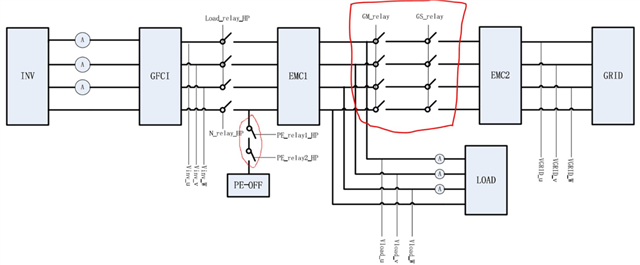Hello,
I need some help please
I am trying to understand if an 'Island mode' isolator is required for this particular inverter design.
The Solar PV Hybrid inverter has an 'EPS' (emergency power supply) output that we would like to use.
The inverter has an internal N-PE Bond relay.
In connected mode this takes its power direct from the grid.
In island mode the Hybrid inverter will have disconnected from the grid as per G98/99, and then the EPS is supplied from PV and/or battery.
So if the inverter is designed to disconnect from the grid during grid loss/outside protection limits is either an Automatic or manual changeover switch required?
